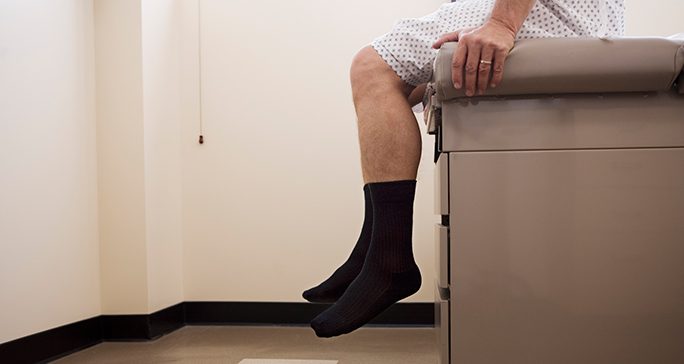- Treatment Options
- Ablation Therapy
- Angiogenesis Inhibitors
- Awake Craniotomy
- Brachytherapy
- Breast Reconstruction Surgery
- CAR T Cell Therapy
- Chemotherapy
- Cryoablation
- High-Intensity Focused Ultrasound (HIFU)
- Histotripsy
- Hyperthermic Intraperitoneal Chemotherapy
- Immunotherapy
- Immune Checkpoint Inhibitors
- Integrative Medicine
- Interventional Oncology
- Laser Interstitial Thermal Therapy (LITT)
- Microwave Ablation
- Minimally Invasive Surgery
- MR-Linac Radiation Therapy
- Palliative Care
- Proton Therapy
- Radiation Therapy
- Radiofrequency Ablation
- Stem Cell (Bone Marrow) Transplantation
- Stereotactic Body Radiation Therapy
- Stereotactic Radiosurgery
- Surgery
- Targeted Therapy
- Theranostics
- Y90 Radioembolization
Minimally Invasive Surgery
An increasing number of cancer surgeries can now be performed with minimally invasive techniques that provide effective treatment with a much smaller impact on the patient.
Minimally invasive surgery, also known as keyhole surgery or laparoscopic surgery, uses tiny surgical tools that can access tumors through incisions less than an inch in length.
A laparoscope is a long, thin tube with a microscopic lens that allows the surgeon to view the entire abdominal cavity on a large computer screen. The laparoscope is inserted through a tiny incision near the navel. Other incisions are made for specialized surgical instruments to perform the operation without having to make a large external incision.
Minimally invasive surgery has several advantages over conventional “open” surgery:
- Less blood loss
- Decreased need for blood transfusions
- Shorter hospital stays
- Decreased pain and need for pain medication
- Quicker recovery and return to normal activities
- Less scarring and improved cosmetic appearance
Robotic surgery
Robotic surgery systems consist of one or more robotic arms remotely controlled by surgeons. One robot arm has a laparoscope. Other arms hold tiny surgical instruments that can fit into an incision less than an inch long. The surgeon sits at a console with 3-dimensional views of the tumor. A joystick similar to that for a video game precisely controls each robotic arm.
Although the robot arms are doing the actual surgery, they still require direct input from the surgeon and cannot be operated without human intervention. Robotic surgery has the benefit of reducing surgeon fatigue and eliminating hand tremor during long, complicated procedures.
MD Anderson uses robotic surgery for removing the prostate or kidneys. It can also be used for removing tumors in the uterus, lung and colon.
Transoral Laser Microsurgery
Transoral laser microsurgery (TLM) is used to treat small tumors in the throat and larynx. A carbon dioxide (CO2) laser beam is used to cut through tissue with more precision than a scalpel.
For the transoral laser microsurgery procedure, an endoscope is inserted through the mouth to view the surgery site. A specially designed microscope is aligned with the endoscope, which helps surgeons guide the laser beam. The beam may be continuous or fired in short bursts, or pulses.
The CO2 laser beam generates minimal heat, limiting damage to structures that are crucial for speech and swallowing functions. It also seals off blood vessels and cauterizes the edges of the wound, resulting in much faster healing.
Featured Articles
MINTOS Program
MD Anderson's minimally invasive surgery efforts are lead by the Minimally Invasive New Technology in Oncologic Surgery (MINTOS) program.
Preparing for surgery
Get information on surgery report times, visitor information, patient discharge and more.
request an appointment online.
Help #EndCancer
Give Now
Donate Blood
Our patients depend on blood and platelet donations.
Shop MD Anderson
Show your support for our mission through branded merchandise.

